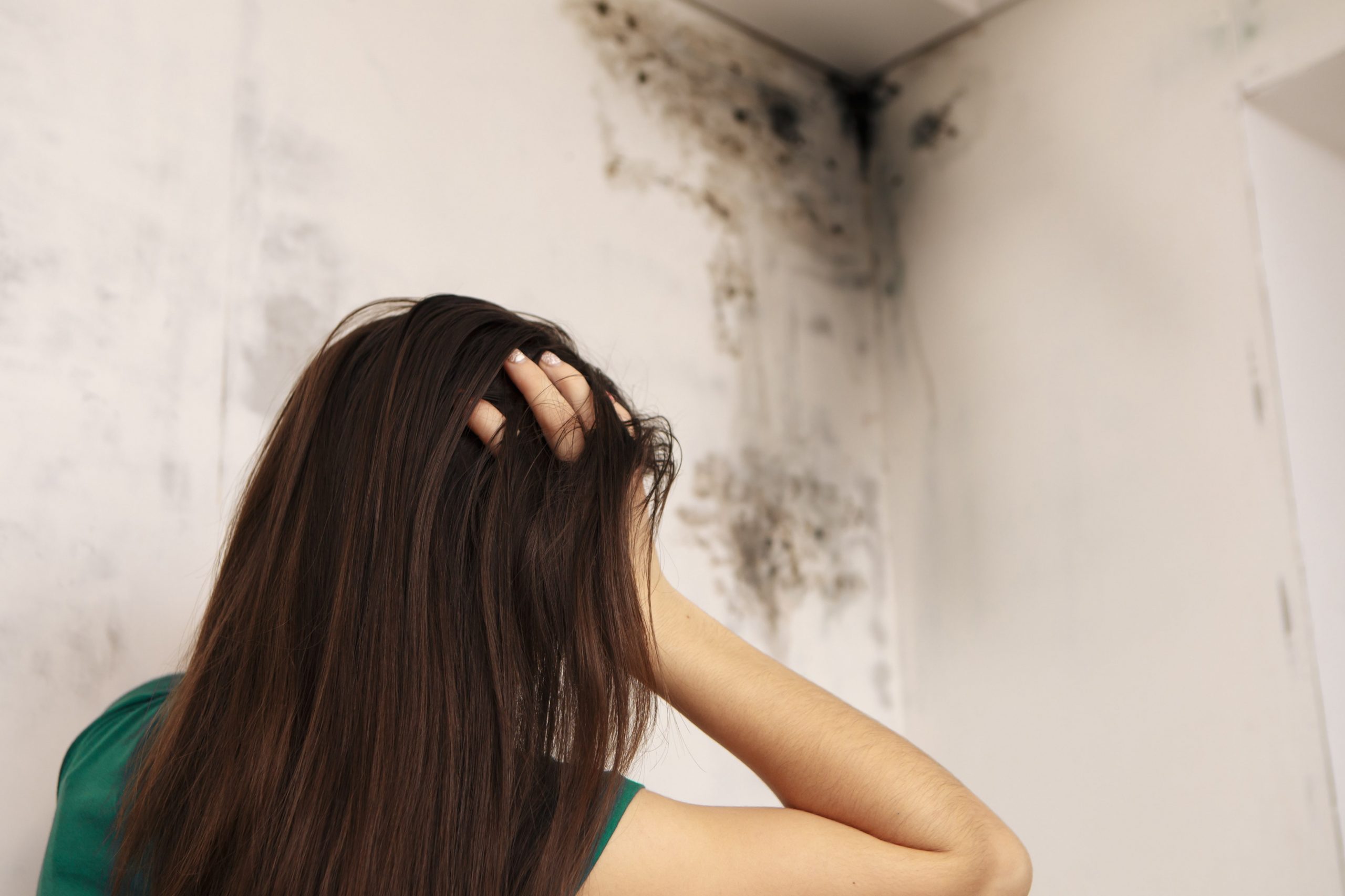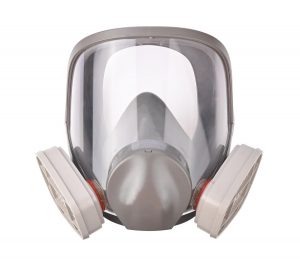When you’ve found mold in a home or building protecting your health, and the health of others, is of primary importance. Once occupants of the home or business have been notified clean up can begin.
Can anyone clean up mold?
Depending upon the level of mold contamination it may be possible to clean up mold without needing a professional. But, at higher levels mold removal should only be handled by trained professionals.

Important: It is recommended that anyone with any kind of lung or allergy-related health conditions (like asthma or allergies) not participate in the mold remediation process.
Levels of mold contamination
The remediation industry has agreed upon the following levels of contamination:
Level 1
When mold has only spread to area of ten square feet or less it is considered a Level 1 mold contamination. Level 1 mold contamination is a DIY job that anyone can take care of with proper precautions.
Level 2
Mold damage that is in an area of ten to thirty square feet is considered to be a Level 2 contamination of mold. Like Level 1, Level 2 mold can be handled as a do-it-yourself job.
Level 3
When mold contamination is of an area between thirty and one-hundred square feet it is deemed to be Level 3. Depending upon severity, a Level 3 mold infestation may be best handled by a professional.
Level 4
Any mold containment taking up an area larger than one-hundred square feet is considered to be a Level 4 mold problem. Level 4 mold remediation should be performed by a trained remediation professional.
Level 5
The definition of Level 5 mold contamination breaks from being based upon square footage. When an HVAC system (air conditioner, furnace or duct work) requires mold remediation professionals specifically trained in HVAC mold remediation should be used.
When to call a remediation professional
Certified mold remediation contractors are recommended when:
- Mold infestation is at Level 3 or higher
- A building or home owner lacks the professional mold remediation experience or an understanding of the depth and breadth of the work that is necessary.
- The building’s HVAC system shows signs of mold beyond spot treatment
If a mold remediation professional is brought in, find a certified remediation contractor. Also check the business’ reviews and, if possible, check two to three customer references.
Protecting your health while cleaning up mold
- Use a mask or respirator
- Wear protective clothing
- Seal off the area
- Dry wet carpeting with air mover fans
- Monitor air scrubbers and flexible ducting
- Heed moldy material handling best practices
- Work in short intervals and take breaks
Use a mask or respirator

The highest risk when performing mold remediation is respiratory-based illness. A mask or respirator should be worn whenever working in the mold-infested area.
Masks, respirators or respirator cartridges should be chosen which are specifically made for mold remediation. N95 is the minimum standard of protection. As N100 provides a higher level of protection they are also suitable.
Respirator cartridges will state which types of particles they protect against. If choosing a respirator for mold, the most important thing beyond the level of protection is ensuring a secure, tight fit.
Wear protective clothing, gloves and eyewear
When working with mold, wear a protective suit (such as a Tyvek suit) or clothing which covers all areas of the body. Clothing should also be easy to put on and take off, and will need to be thoroughly cleaned when work is complete.
To protect the eyes and hands, personal protective equipment should be worn. If not wearing a respirator which covers the eyes, wear goggles. Be sure to cover not only your body, but also your hands and wrists.
Seal off the area with the mold problem
Separate the mold area with temporary walls for containment (or plastic sheeting). Also, use plastic to seal off ducts in the area where you are working, to prevent spores from traveling through the ductwork into other parts of the home or building.
Regularly check that the plastic sheeting and duct seals to ensure there are no compromises.
Dry wet carpeting with air mover fans
While industrial dehumidifiers bring down the ambient humidity, porous construction materials and carpet that are waterlogged need to be dried out. Strategically place air movers (also called a carpet dryers) in rooms with wet carpet or flooring to dry them out.
Monitor air scrubbers and flexible ducting
While working, periodically check air scrubbers and flexible ducting. Be sure there are no kinks or breaches in hosing or air scrubber seals. Also be sure to replace air scrubber filters as specified by the manufacturer.
Related: Best portable HEPA air scrubber for mold
Heed moldy material handling best practices
Enclose all moldy materials in sealed, plastic bags before carrying them away. Be sure that bags are not only sealed, but are not disposed in a way that they may become punctured.
Remove the outer layer of work clothing inside the work area. Wash exposed items separate from other clothing or bag it and dispose of it.
When disposing of gloves, respirators, Tyvek suits and any worn or work items, use the same care used for disposing molds and moldy materials.
Work in Short Intervals with rest breaks
If the damage is extensive and requires many hours of cleanup, plan to work for short periods of time. Between work stints, rest in a well ventilated area with fresh air.
Be careful when entering and leaving the remediation area. Before returning to the work area, be sure all protective gear is correctly fitted and damage-free.